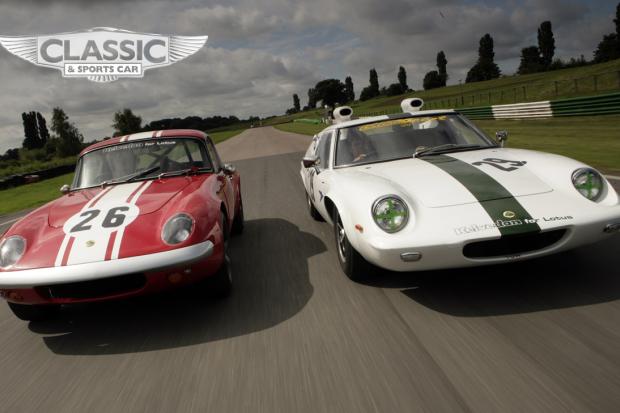
Lotus legend John Miles perfected two of its most significant racers: the 26R and Snorkel Car 47. Russ Smith meets owner Pat Thomas and drives the cars.
Colin Chapman didn’t do compromise, which made his decision that the 1962 Lotus 23 would be Lotus’ last dedicated, race-only small sports car quite a weighty one. The more mainstream and market-savvy idea of basing all future racers on roadgoing models would surely involve the cars in some level of compromise. Coupled to that, they had to be successful for there to be any point in the ‘win on Sunday, sell on Monday’ plan.
I hardly need tell you that Chapman and Lotus rose magnificently to the challenge, cementing their marriage of brains and lightness triumphing over brawn in the public’s mind, an image that lives on in the Elise and Exige today. With first the Elan, then the Europa, it created small-engined giant-killers, won a lot of races and sold a lot of cars off the back of their success. Lotus’ reputation wasn’t all down to F1, you know.

The Elan 26R appeared in ’64. That ‘R’ suffix stands simply for Racing – all Elans until the Plus 2 have the factory code ‘26’. Outwardly the 26R looked much like other Elans, apart from sporting recessed and fixed rather than pop-up headlamps, plus subtly flared wings to allow for bigger wheels. But that bodyshell was a lightweight single-skinned affair, bolted to a chassis that had been strengthened around the crucial suspension attachment points. Power still came from Lotus’ Ford-based twin-cam, but these were versions built by BRM or Cosworth, or a combination of the two after it was discovered that the real hot ticket was to use a BRM head on a Cosworth block. Roadgoing Elans may have felt quick with 105bhp, but regular Lotus driver John Miles proved able to beat everything in sight with a genuine 155bhp.

It was Miles – son of Bernard Miles, who built up London’s Mermaid Theatre – who drove both these cars to many successes before his promotion to Lotus’ F1 team in 1970. In 1966, with the very car you see here, prepared by the highly regarded Willment team, Miles topped the Autosport Championship after a dominant 15 wins, a feat that grows in stature when you view period photos and see what else was lined up on the grids. In races that included the final Sussex Trophy at Goodwood before it was closed, the 26R vanquished Ferraris, Porsches, Jaguars and Astons, all of which had much larger engines.

Yet Miles’ most memorable drive was at the ’66 Brands Hatch Easter meet. Leading from Bernard Unett’s Sunbeam Tiger, the Elan’s bonnet came loose and started to flap about. Miles pulled into the pits to have it removed, then set off in pursuit of Unett, passing him on the last lap to win. Racing without a bonnet clearly infringed the rules, but Unett declined to protest in honour of Miles’ incredible drive.









